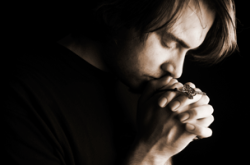|
|
Entries in monastery (1)
Participating in Christ Through Monastic Life (ThinkJump Journal #45 Kim Gentes)
 Sunday, January 2, 2011 at 2:01PM
Sunday, January 2, 2011 at 2:01PM  We have said before that the primary goal of the liturgies, and of the daily and seasonal patterns of Christian practice is to delve repeatedly, personally and vicerally into participation with Christ. Though I've quoted him time and again, Robert Webber was instrumental over the last century in articulating this reality and promoting its value amongst the Protestant churches that would have considered themselves as "non-liturgical". He said it very clearly when speaking of the ceremony and practice of Easter:
We have said before that the primary goal of the liturgies, and of the daily and seasonal patterns of Christian practice is to delve repeatedly, personally and vicerally into participation with Christ. Though I've quoted him time and again, Robert Webber was instrumental over the last century in articulating this reality and promoting its value amongst the Protestant churches that would have considered themselves as "non-liturgical". He said it very clearly when speaking of the ceremony and practice of Easter:
"The message of Easter is that the way of being in Jesus, the way of living the new resurrected life is through participation.... No one should deny the value of a good argument from Scripture for the resurrection nor should one negate the power of feeling the presence of the resurrected Christ in the songs sung, sermon preached and the Eucharist celebrated. But the emphasis of the early church fathers and the ancient church is knowing God through the way of participation."(1)
This brings the entire liturgical and calendar year practice into clear focus. The only thing that might seem even more foreign to the "free" church than liturgies, Christian daily regimen and Christian calendar year would be the ancient community of the monastery.
Misunderstood, the monastery and its monks are as strange to many modern Christians as a spaceship with aliens might be to modern days suburbians who, out cutting their lawns on Saturday afternoon, notice a large craft has landed in one of the unsold, vacant lots in their burgeoning development. A quick survey of friends and neighbors can establish the alien understanding we have of the monastic life and its participants. They're weird, we think, with their strange garments, odd practices, unique dwellings and even stories of strange and miraculous powers. Certainly they are pious enough, but we'd just as soon let them be the ones who abstain, flagellate and chant their way into the Kingdom of God. It's not for normal people, we think. A close look reveals something, while less sinister, is nonetheless fantastic.
 Studying the monastic must start with the document of foundational significance to nearly every monastery in Western tradition: the Rule of St. Benedict. A simple, yet wonderfully complete guidebook to the monastic life and community, the Rule parses in words what becomes in action the way of living for monks in virtually all Christian monasteries. Benedict's wisdom was in his brevity of instruction that always translates instantly into practical activity, and thus rarely needs defense. A beautiful example is this terse statement regarding how an abbot (the transliterated New Testament word -from abba- which means "father" in the community) may instruct the monks in the community:
Studying the monastic must start with the document of foundational significance to nearly every monastery in Western tradition: the Rule of St. Benedict. A simple, yet wonderfully complete guidebook to the monastic life and community, the Rule parses in words what becomes in action the way of living for monks in virtually all Christian monasteries. Benedict's wisdom was in his brevity of instruction that always translates instantly into practical activity, and thus rarely needs defense. A beautiful example is this terse statement regarding how an abbot (the transliterated New Testament word -from abba- which means "father" in the community) may instruct the monks in the community:
To those who understand, he may expound verbally the Lord's directions: but to the stubborn and dull, he must exhibit the Divine commandments by his actions in his everyday life.(2)
Pausing for a moment, we realize how diametrical opposite this statement is to our western precepts. This is quite distinct from our modern learning systems where we speak to those who don't understand as though we can convince them through our words of instruction. Once we believe that someone understands a teaching, we stop verbally instructing them.
Benedict proposed the opposite- do not speak to those who don't understand. Use the example of your life to teach them the commands of God. Once they have learned those and understand them, then use words to expound verbally on the topic. Presumably the verbal discourse is a clarifying tool for further growth, amongst those who grasp the basic concepts of living a specific practice. Action is first teacher, words are expository afterthoughts for further growth.
Similarly, the Rule is replete with checks and balances that, while embracing clear authority structures, values every member of the community with intentionality. In a culture where wisdom and age are sincerely revered, even the young are valued without dismissal:
Whenever an important matter is to be undertaken in the monastery the abbot should call the entire Community together and should set forth the agenda. After hearing the various opinions of the brothers, he should consider all and then do what he thinks best. We feel that all should meet for the Lord often reveals the best course to a younger monk.(3)
Despite the patriarchal nature that naturally develops in such a monastic community, through the articulation of the Rule a valuing of the entire community, here the youth, is an important balance and strength of such a society.
One misguided stereotype common among Protestants regarding monastic (and generally Catholic) communities is the nomenclature assigned to community members. Much of this has its foundation in Benedict's Rules, as he states:
The senior shall call the junior brother, the junior shall call the senior Father. The abbot, however, since he takes the place of Christ, shall be called Abbot or My Lord. This is done out of honor and love of Christ, not because of his assumption of dignity.(4)
Initially, hearing a statement declaring a man as substitutionary for Christ in earthly community seems wildly erroneous, even heretical. But Benedict had found a reason for it that fit completely with the growing liturgy of the now 500 year old church- participation. While the liturgies, especially the Eucharist, embodied the physical elements with which we could participate in the life, death and resurrection of Christ, the communal life and the Rule, offered a participation of people into the roles of Christ as brother, father, son, abbot and even stranger.
The titles given to one another within the monastery reflect a participation in a community which seeks to embody Christ, at its very core. The activities of the community seek to engage Christ's sufferings, in the hopes of joining in His glories. The practices of the community seek to example Christ by "welcoming the stranger, feeding the hungry and clothing the naked", as though each person encountered, whether monk visitor from another monastery or stranger arriving unscheduled, was Christ himself, as was written. Finally, the language and titles of each member reflects this embodiment of Christ, most clearly with the position of the Abbot, who is said to actually "take the place of Christ". In a less balanced instructional or community, such a declaration would lead to quick use of impropriety and abuse. But in the communal Rule of Benedict, the abbot's requirements and prescriptions about their own duties and position were even more stringent than those of the subordinates. This intentional counter-balance has thrived as a successful self-governance for monasteries for well over fifteen hundred years.
As has been said, the thrust of the monastic Rule is participation in the role of Christ through service, sacrifice, obedience, benevolence, humility, silence, solitude, community and worship.
In the community of Christ,
Kim Anthony Gentes
- Robert E. Webber, Ancient Future Time, (Grand Rapids: Baker Books, 2006), P. 147
- Trans. A. C. Meisel & M. L. del Mastro, The Rule of St. Benedict, (New York: Doubleday, 1975), P.48
- Ibid, P.51
- Ibid, P.99

